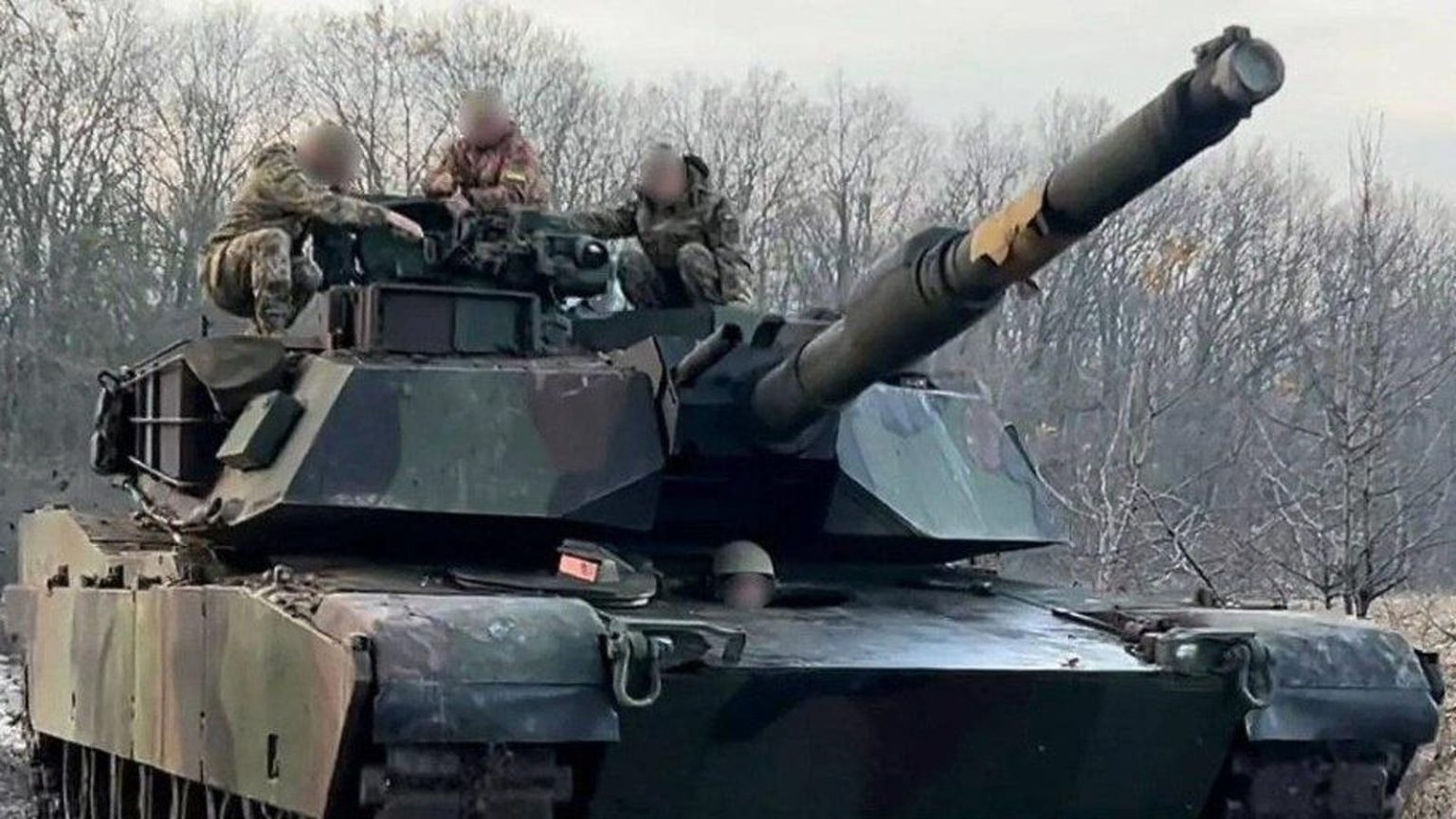Reporting by correspondent Gabriel Silveira.
The Ukrainians always have sought to use their Western-made tanks and fighting vehicles in conjunction with other tanks and infantry fighting vehicles. This was apparent during Ukraine’s summer counteroffensive, when German-made Leopard 2A4 and 2A6 and Soviet-style T-64 and T-72 tanks deployed alongside U.S.-supplied M-2 Bradley IFVs. Ukraine’s 31 American-made M-1 Abrams should, if anything, enhance this interoperability.
The Abrams has the best sensors of any tank in Ukrainian service. With its SADA-II thermal vision system, a 69-ton, four-person M-1 can detect targets up to five miles away—farther than all other main battle tanks in Russia’s 23-month wider war on Ukraine.
An M-1 gunner, peering through his SADA-II, also benefits from a 50-times digital zoom. That’s extremely useful on flat terrain. An Abrams gunner not only can detect a target from five miles away, he should be able to identify it, too, thanks to the zoom function.
Think of the M-1 as a sensor platform first, and a tank second. Imagine an Abrams with its SADA-II operating alongside Soviet-style MBTs with their less capable optics. An M-1 crew could detect targets at long range and pass the locations via radio to other Ukrainian crews.
There’s also a chance that Ukraine’s M-1s and M-2s come with the Blue Force Tracker: a GPS-based system that registers, on a digital map, the locations of friendly forces.
If Ukrainian Abrams and Bradleys can share situational awareness via their networked Blue Force Trackers rather than via voice radio, they might make a better team than, say, a Leopard 2 and a Bradley would make.
Pairing an Abrams with other vehicles also lends the team-up tremendous night-fighting capability. The M-1 with its high-fidelity thermal sights fights almost as well at night as it does during the day, out to distance of several miles. Contrast this with the Russian T-72B Obr. 2022 tank, whose own crude thermal sights might work at a range of little over a mile.
The Ukrainian armor corps began shifting to night operations as it inducted Leopard 2s early last year. Now that the corps’ 31 M-1s have arrived in Ukraine, this shift could accelerate.
Teaming up and deploying at night, the Ukrainian M-1 promises to enhance the situational awareness of other vehicle types—and help them to fight around the clock.
Read the full article here





